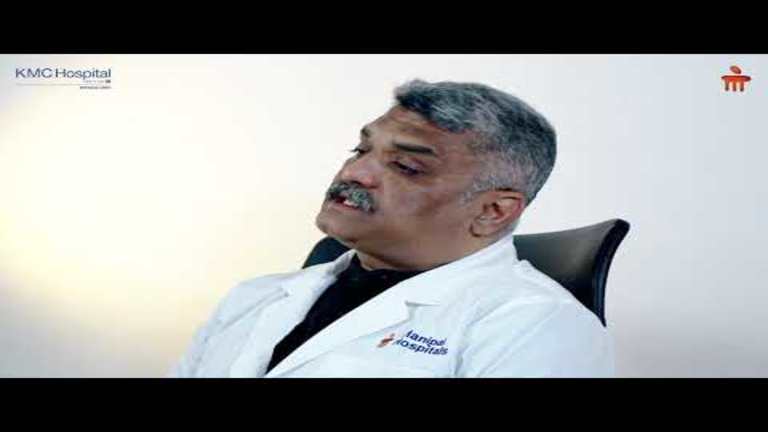
Get A Brighter Smile: Causes Of Yellow Teeth & How To Whiten Them Naturally

Department of Dental Medicine

4 Min Read
Mar 25, 2024

Book Appointments &Health Checkup Packages

Book Appointments &Health Checkup Packages





Our Dental Medicine Department at Manipal Hospitals offers comprehensive, up-to-date oral care through advanced diagnostic and therapeutic approaches. The department utilises advanced technology and treatment approaches to correct complex dental problems using the latest technological innovations to ensure a positive outcome for every patient. Advanced diagnostic tools such as digital radiography and 3D imaging systems provide the basis for excellent treatment planning and execution. The onboard dental specialists possess vast experience in restorative dentistry, periodontics, orthodontics, oral surgery, and cosmetic dental procedures. In a unique collaborative environment, multiple dental specialists jointly tackle complex cases to provide comprehensive care with functional and aesthetic considerations. The department regularly monitors high infection control and patient safety standards by adhering to international protocols in delivering dental care.

The Dental Medicine department at Manipal Hospitals offers the most advanced and thorough treatment in dental practice, in conjunction with excellent faculty and facilities. Some reasons to avail of our dental services are:
Expert Dental Team: A team of qualified dental specialists with extensive knowledge and experience in treating various disorders related to dentistry, from simple cases all the way up to the most complex ones.
Advanced Technology: Complete and advanced dental equipment, digital imaging systems, laser treatment technologies, and other advanced sterilisation facilities; this drives the base for precise diagnosis and treatment as well as for safety.
Broad-based Care: The entire spectrum of dental treatment from routine examination to complex surgical treatment.
Patient-centred Care: Every treatment plan is custom-made to the patient's preference. Each planned procedure is finalised after considering medical history, lifestyle, and personal preferences. The team also focuses on patient education and preventive care, fostering long-term maintenance of the oral environment.
A brace is used to correct the alignment of teeth to achieve a more aesthetic smile and better oral health. Teeth that are misaligned can make it harder to maintain good oral hygiene since the toothbrush may not be able to reach certain spots. Good oral hygiene helps prevent tooth decay and gum disease to ensure that your teeth remain in good condition…
Even if you lose your teeth, you don't have to lose your smile. With dental implants, you can replace decayed and dead teeth with perfectly shaped replacements. Dental implants are commonly suggested when a tooth extraction is recommended.
When a tooth is decayed, cracked or otherwise unhealthy, a root canal is done to prevent further damage. In the procedure, the tooth is opened and any infected tissue is cleaned out. After the cleaning, the opening is filled and closed off. Saving an infected tooth allows you to avoid getting an artificial tooth, and it also stops your teeth from misaligning…

Oral Prophylaxis
Oral prophylaxis involves cleaning and maintaining the oral tissues to prevent disease. Such a systematised practice uses both manual and ultrasonic instruments for the removal of plaque, calculus, and stains from all tooth surfaces. This treatment is sought to serve as a preventive measure against periodontal disease and dental caries and performs far superiorly than regular cleaning with a toothbrush and floss. Other benefits include discouragement of the development of gum disease and halitosis, detection of oral problems in their earliest stages, and maintenance of general good oral health.
The procedure starts with a proper and detailed oral examination and documentation of existing conditions. The dental professional begins by primarily performing supragingival scaling with ultrasonics followed by subgingival instrumentation. Root planing may be done to smooth rough root surfaces and remove diseased cementum. The process ends with polishing the tooth surfaces with prophylactic paste, followed by fluoride application when indicated. Modern techniques utilise air polishing systems for effective stain removal while maximising patient comfort. Post-procedure instructions incorporate revisiting oral hygiene, food preferences, and follow-up appointments for regular maintenance, ultimately to brace for a long-term maintenance plan for oral health.
Tooth Extractions
Tooth extraction is one of the most common surgical procedures involved in dentistry, and it involves the complete removal of a tooth out of its socket in the alveolar bone. The extraction may come as a result of caries in advanced stages, periodontal disease, trauma, or orthodontic reasons. Advanced techniques now employ an atraumatic approach with flexible instrumentation for precise manipulation that protects the surrounding tissues. Before that, the process may include eradication of sources of infection, relief from pain, and planning for prosthetic replacement considerations. Most advanced imaging techniques, such as those associated with CBCT scans, help plan more complicated extraction processes, especially when dealing with tooth impactions.
The extraction process begins with a comprehensive clinical and radiographic assessment to evaluate tooth position, root morphology, and anatomical considerations. Local anaesthesia is administered following the selection of an appropriate technique. It may be a simple extraction completed with elevators and forceps or a surgical extraction involving flap elevation and bone removal. Post-extraction management entails socket preservation techniques when indicated to stabilise the dimensions of the alveolar ridge for the possibility of a future restoration using biomaterials. There is an emphasis on the post-operative care details, biting on gauze, applying ice on site, and the protocol to determine when medications are prescribed to promote healing and inhibit post-surgery complications such as dry sockets or infections.
Crowns and Bridges
Crowns and bridges are the most modern restoration dentistry procedures for achieving restoration of function and aesthetics for lost or damaged teeth. These restorations are custom-made with extremely strong materials, such as porcelain-fused-to-metal, all-ceramic, or zirconia, to match the natural dentition of each client. They are of utility besides performing indecently, compared to conventional fillings, providing maximum protection over compromised teeth. Other advantages include restoring chewing function, improving aesthetic appearance, halting tooth movement, and maintaining facial structure. Digital scanning and CAD/CAM technology have opened a new frontier in how crowns and bridges are made.
The procedure involves meticulous tooth preparation and starts with a thorough examination and treatment planning using radiographs or even digital simulation. Tooth preparation, following general guidelines for reduction to afford proper thickness for the restoration while ensuring maximal preservation of the tooth structure, may be accomplished through standard impression techniques or a detailed digital scanner used to determine precise tooth dimensions for lab-based fabrication. Temporary restorations protect the preparation for the tooth during the fabrication of the definitive restoration. Final cementation denotes the use of the most modern adhesive systems or conventional cement, whittled down by case requirements. The process concludes with occlusal adjustment and verification of margins to ensure optimal fit and function. Post-cementation care includes specific hygiene instructions and regular follow-up to monitor restoration integrity and tissue health.
Complete and Partial Dentures
Dentures are mechanical replacements for missing teeth and associated surrounding tissues and are available in complete or partial configurations. Complete dentures replace all teeth on an arch, while partial ones replace certain missing teeth and allow the retention of natural dentition. With an emphasis on rehabilitation, modern materials, including high-impact acrylics and flexible thermoplastics, allow for the construction of aesthetic and functional prosthetics that are far superior to their predecessors. The restorative functions include effective chewing, speech improvement, the maintenance of facial support, and increased self-confidence. The technique focuses on fit and stability, comfort, and, therefore, a natural appearance.
The fabrication process involves comprehensive examination, including ridge mapping and jaw relation records. An initial impression is completed, and then a custom tray is fabricated. The final impressions record functional border movements. This involves careful selection of teeth, an arrangement according to aesthetic principles, and also objectives for try-in in the presence of the patient. Final processing includes characterised bases and selective grinding for optimum occlusion. After insertion, the patient is given detailed maintenance instructions and set up with appointments for adjustments and reline if needed.
Paediatric Dental Care
Paediatric care focuses solely on prevention and therapeutic procedures applied to infants through adolescents. The overall approach combines behavioural management techniques with gentle treatment protocols utilising equipment and materials developed specifically for children. Immediate needs are combined with attention to growth patterns and habit management. Some of the advantages include early evaluation and interventive measures for developmental issues, prevention of dental anxiety, the establishment of good oral habits, and the crafting of positive dental experiences. The technique is preventive in nature, promoting minimal intervention throughout the course of treatment.
The process begins with rapport building and a thorough examination, including growth assessment and habit evaluation. Treatment planning always includes preventive measures, including sealants and fluoride applications, as well as restorative measures using paediatric-specific materials. Behaviour guidance techniques include tell-show-do methodology and positive reinforcement. The protocol consists of parent education on diet, hygiene, and habit management. When patients return for regular recall visits, their dental development and oral health are monitored.
Root Canal Treatment (RCT)
This is a treatment intended to preserve defective teeth through the removal of diseased or damaged pulp tissue; such procedures are carried out in endodontics. Using microsurgical approaches, advanced imaging, rotary instrumentation methods, and biocompatible filling materials are used. Modern technologies incorporate apex locators and operating microscopes for enhanced precision. Some of the advantages include the preservation of teeth, alleviation of pain, prevention of extraction, and preservation of nature. This emphasises the thorough clean-up of infected tissue and the assessment of the remaining structures in a way that gives them maximum integrity.
While treatment begins with a detailed diagnosis through clinical tests and radiographic examination, access preparation is followed by working length determination following apex locators. Cleaning and shaping are done using rotary Nickel-Titanium instruments following a predetermined protocol. Irrigation is carried out using activated solutions to enhance disinfection further. Techniques of obturation include warm vertical compaction or carrier-based systems. The ultimate restoration is mostly full protection coverage. The follow-up visits after treatment help to monitor healing and function.
Implants and Full Mouth Rehabilitation
They are the gold standard therapy modalities for tooth replacement; a biocompatible titanium fixture is placed surgically into the jawbone. Full mouth rehabilitation combines implant technology with complete restoration of all the dental arches. Advanced materials and techniques are incorporated; 3D planning software and surgical guides allow restoration of functions and aesthetics while resulting in bone preservation and life enhancement. This technique requires prior planning and step-wise execution for predictable results.
This includes diagnostic procedures such as CBCT imaging, digital planning, and surgical placement following guided protocols that take prosthetic requirements into account. After healing times, temporisation of the prosthetics, if indicated. Final restoration may use any number of prosthetic options, including screw-retained or cement-retained options. Post-treatment care encompasses the maintenance protocols and regular monitoring of implant health and function.
Orthodontics Alignment with Invisalign
Invisalign represents an advanced clear aligner system utilising digital technology for teeth straightening without traditional brackets. The sequential aligners, made through computer-aided design and manufacturing, facilitate the gradual movement of teeth and provide better aesthetic appeal than the conventional orthodontics treatment. The merits include better appearance during treatment, better cleaning accessibility, comfort when in place, and predictable results. It is a technique that highlights patient compliance and flexibility in treatment.
The procedure proceeds with a digital scan, while treatment simulation is performed by ClinCheck software. Aligners are fabricated according to treatment plans that have been approved for staged delivery. Progress is monitored regularly to evaluate if the movement is progressing accordingly. Refinement scans are sometimes made as part of the finishing process. Following that are detailed instructions on how to wear the appliance and care for it. Post-treatment retention will be through clear retainers for long-term stabilisation. The process stresses patient education and follow-up to ensure success in the treatment.
Dentures, Crowns, and Bridges
Prosthodontics, commonly referred to as the branch of dentistry associated primarily with the provision of restoration work, consists of an area within restorative dentistry concerned with all aspects of the replacement of missing or severely damaged teeth with a substitute in the form of removable dentures, fixed crowns, and bridge applications. The science combines structural, biomechanical properties and processes with aesthetic concerns to create individualised solutions that mesh together with existing structures for a more naturalistic appearance.
A thorough clinical examination and treatment planning along with radiographic analysis and diagnostic impressions, start the case off. The taking of a detailed impression using special materials, bite registration, and a try-in to check the fit and functionality of the appliance is done for the purpose of dentures. The more modern techniques utilise digital scanning and CAD/CAM procedures to achieve better precision. This also includes the preparatory stage for crowns to accomplish sufficient reduction of tooth structure, proper management of tissues, and precision in impression techniques. As part of constructive procedures in the case of bridges, the assessment of the abutment teeth, the consideration of the action of bite forces, and the suitable selection of materials shall be duly performed with care. The advantages are beyond the enhancement of esthetics; they incorporate greater chewing efficiency, better speech articulation, and prevention of drift. Zirconia and lithium disilicate are currently advanced materials with improved strength and aesthetics.
Intra-Oral Radiology
Intraoral radiology is an examination discipline in dentistry that is regulated through dosage-controlled X-ray exposures to assess the internal structures of the mouth for investigation of teeth and supportive bones, as well as tissues that surround them. It is the most vital diagnostic tool that uses various imaging techniques with advanced digital technology to provide important information on the clinical state of oral health, disease processes, and response to treatment. Since the introduction of digital sensors, a huge evolution in this sector has reduced radiation exposure to patients while improving malignant picture quality and diagnostic capacity.
The digital sensors or film are correctly positioned for intraoral radiological procedures, an X-ray beam is precisely aligned, and stringent radiation safety protocols are established. Other techniques, such as periapical, bitewing, and occlusal, allow for complete visualisation of the dental structures. Digital systems offer immediate image capturing, enhancement, and other benefits, such as integration with patient records. The benefits also include early detection of dental caries, periodontal disease, and pathological processes. Advanced software allows for detailed measurements, density analysis, and when needed, three-dimensional reconstruction. It allows the dentist to plan treatments according to the various dental procedures, from a simple restoration to a complicated surgical intervention. Quality assurance protocols guarantee that image quality is not compromised and radiation safety is maintained.
Periodontal Treatments
Periodontal therapy concentrates on diseases of the supporting structures of teeth, which include gums, periodontal ligament, and alveolar bone. It covers a wide spectrum of preventive and therapeutic, as well as general-care procedures, from prophylaxis to numerous surgical manoeuvres. Other important aspects of this discipline include inflammation control, tissue regeneration, and maintenance therapy for achieving periodontal health and stability.
The approach consists of a thorough periodontal examination, including probing depth measurements, assessment of bleeding and suppuration, and radiographic analysis of bone levels. Initial therapy would include scaling and root planing done through both hand instruments and ultrasonic devices that remove plaque, calculus, and contaminated cementum. Advanced procedures may include laser therapy for pocket decontamination, local delivery of antimicrobial agents, and regenerative procedures using barriers and biologics. Surgical interventions range from gingivectomy and osseous surgery to guided tissue regeneration techniques and soft tissue grafting. Benefits of treatment include the resolution of infection, the reduction of the depth of pockets, and the stabilisation of periodontal attachment levels.
TMJ Disorders
TMJ disorders form a spectrum of conditions concerning the jaw joint and related musculature, which affect activities usually required in day-to-day living, such as speaking, chewing, and facial expression. Some of the pathological conditions in this multifactorial disorder may include disc displacement, arthritis, and myofascial pain syndromes. This field requires an adequate understanding of joint biomechanics, neuromuscular function and pain management principles.
The procedural aspects and benefits of TMJ treatment follow a systematic approach toward diagnosis and management. Initial assessment includes detailed history, clinical examination of joint function, muscle palpation, and evaluation of occlusal relationships. Diagnostic imaging might include panoramic radiographs, CBCT, or MRI studies to visualize joint structures and positions. The common procedure includes a course of conservative-to-invasive sequence, beginning with patient education and self-care instructions. Physical therapy interventions should include fish mouth jaw exercises, posture training, and manual therapy techniques. Occlusal appliance therapy utilises specially constructed splints to alter joint and muscle activity loading. More aggressive options include arthrocentesis, arthroscopy, or open joint surgery if indicated. Benefits are a reduction in pain levels, improvement in range of motion, and quality of life.
Teeth Whitening
Professional teeth whitening is an advanced cosmetic dental procedure that uses the controlled application of oxidising agents to affect tooth colour and achieve well-pleasing dental aesthetics. This area combines chemical bleaching, soft tissue protection, and colour theory principles to reliably improve tooth shades. Considerable development has been seen throughout the years in this field, particularly in modern bleaching agents, activating systems, and protocols to prevent sensitivity.
Initial treatments always commence with a thorough assessment of the type of discolouration, pre-existing restorations, and patient expectations. Protocols for pre-treatment include professional cleaning, photography, and shade documentation using standardized guides. High-concentration hydrogen peroxide or carbamide peroxide gels, often activated by specialised light or laser systems, offer in-office treatment. Approximal soft tissue is isolated using liquid dam materials to protect the gingival tissues. Patients are provided with custom trays and appropriate concentration bleaching gels, which are utilised in a manner specified in writing. Benefits include considerable enhancement in dental appearance and hygiene, better rejection and expulsion of discolouration, and restoration of beauty. Benefits include significant improvement in tooth shade, enhanced smile aesthetics, and minimal tissue irritation when properly executed.
Our Department of Dental Medicine is committed to offering the best possible oral health for all patients. Our advanced services and facilities include:
Oral prophylaxis: Regular cleaning to promote oral hygiene, gum disease prevention, and a beautiful smile.
Extractions: Careful extraction of troublesome teeth, including wisdom teeth, with as little discomfort and recovery time as possible.
Crowns and bridges: They restore function and appearance for repairing damaged teeth or those missing.
Complete and partial dentures: Fitted denture replacements for confidence restoration and increased chewing and speaking abilities
Paediatric dental care: Gentle, child-focused care for young patients, including preventive treatments and cavity management
Root Canal Treatment (RCT): A painless procedure to save infected or damaged teeth and restore functionality.
Dental Implants and Full Mouth Rehabilitation: Permanent solution for missing teeth in patients who want to see improvement not just in their self-confidence but also in their overall oral health.
Patients visit the Dental Medicine department at Manipal Hospitals India for expert diagnosis, advanced treatment, and personalized care. The department specializes in managing Braces & Invisalign, Dental Implants, Root Canals, ensuring world-class medical support for patients.
The Dental Medicine department at Manipal Hospitals India provides a wide range of treatments, including:
To book an appointment with a Dental Medicine expert at Manipal Hospitals India, please call 1800 102 5555. Our dedicated team will assist you in scheduling a convenient consultation.
The Dental Medicine department is led by highly qualified specialists, including:
For your initial consultation at Manipal Hospitals India, please bring:
Providing these documents will help our specialists ensure a comprehensive diagnosis and personalized treatment plan.
Manipal Hospitals India is a preferred choice for Dental Medicine due to:
We are committed to providing world-class healthcare with compassionate service.
At Manipal Hospitals India, we offer facilities such as:
Our Department of Dental Medicine is committed to offering the best possible oral health for all patients. Our advanced services and facilities include:
Oral prophylaxis: Regular cleaning to promote oral hygiene, gum disease prevention, and a beautiful smile.
Extractions: Careful extraction of troublesome teeth, including wisdom teeth, with as little discomfort and recovery time as possible.
Crowns and bridges: They restore function and appearance for repairing damaged teeth or those missing.
Complete and partial dentures: Fitted denture replacements for confidence restoration and increased chewing and speaking abilities
Paediatric dental care: Gentle, child-focused care for young patients, including preventive treatments and cavity management
Root Canal Treatment (RCT): A painless procedure to save infected or damaged teeth and restore functionality.
Dental Implants and Full Mouth Rehabilitation: Permanent solution for missing teeth in patients who want to see improvement not just in their self-confidence but also in their overall oral health.
Our team ensures precise diagnosis and treatment planning for each patient.
The Dental Medicine department at Manipal Hospitals offers the most advanced and thorough treatment in dental practice, in conjunction with excellent faculty and facilities. Some reasons to avail of our dental services are:
Expert Dental Team: A team of qualified dental specialists with extensive knowledge and experience in treating various disorders related to dentistry, from simple cases all the way up to the most complex ones.
Advanced Technology: Complete and advanced dental equipment, digital imaging systems, laser treatment technologies, and other advanced sterilisation facilities; this drives the base for precise diagnosis and treatment as well as for safety.
Broad-based Care: The entire spectrum of dental treatment from routine examination to complex surgical treatment.
Patient-centred Care: Every treatment plan is custom-made to the patient's preference. Each planned procedure is finalised after considering medical history, lifestyle, and personal preferences. The team also focuses on patient education and preventive care, fostering long-term maintenance of the oral environment.
A full oral examination is conducted to evaluate your oral health. After this, your dentist will inform you of any issues that need to be addressed and the relevant treatments available.
Poor oral hygiene High sugar diets Tobacco consumption High alcohol consumption
Yellowing of the teeth Inflamed gums that bleed easily High sensitivity Cracked or loose teeth Bad breath
For the most part, tooth decay is preventable by maintaining good oral hygiene. In some cases, alignment and/or correction may be required, but brushing twice a day with good technique, flossing once a week and getting a dental check-up twice a year is known to prevent tooth decay very effectively.
Manipal Hospitals is committed to providing the best quality of personalized dental care and to engage in long term relationships that benefit our patients and protect their oral health in the long run. Reach out to us to find out more about how you can keep your teeth healthy. Book an appointment with our dental experts to keep smiling your best!
.jpg)
Are you experiencing a burning sensation in your mouth? In this video, Dr. Srinivas K., Oral Medicine Specialist at Manipal Hospital, HAL Airport Road, Bangalore, explains the possible causes behind this…
.jpg)
Visiting your dentist every six months will ensure proper maintenance and protection of your teeth from issues like excess deposits and cavities, says Dr. Chandramohan Raju, Dental Surgeon, Manipal North…

Oral & Maxillofacial Surgery is a specialised branch of Dentistry. It deals with surgery of mouth, jaw and oral cavity. Dr Abhay Kamath, Consultant- Oral & Maxillofacial Surgery, KMC Hospital Mangalore,…
Home Specialities Dental-medicine



Visit the Global site for International patient services
